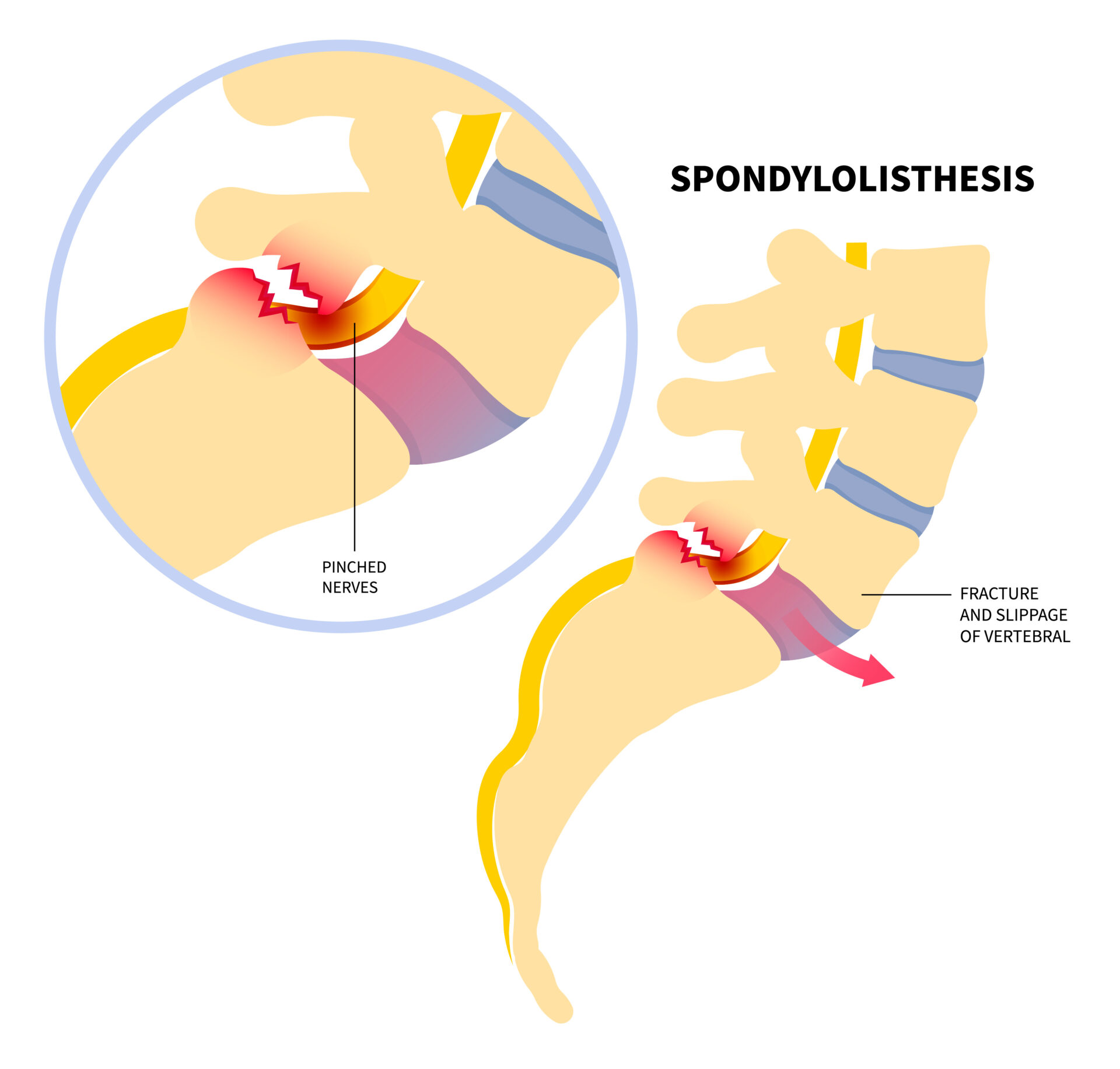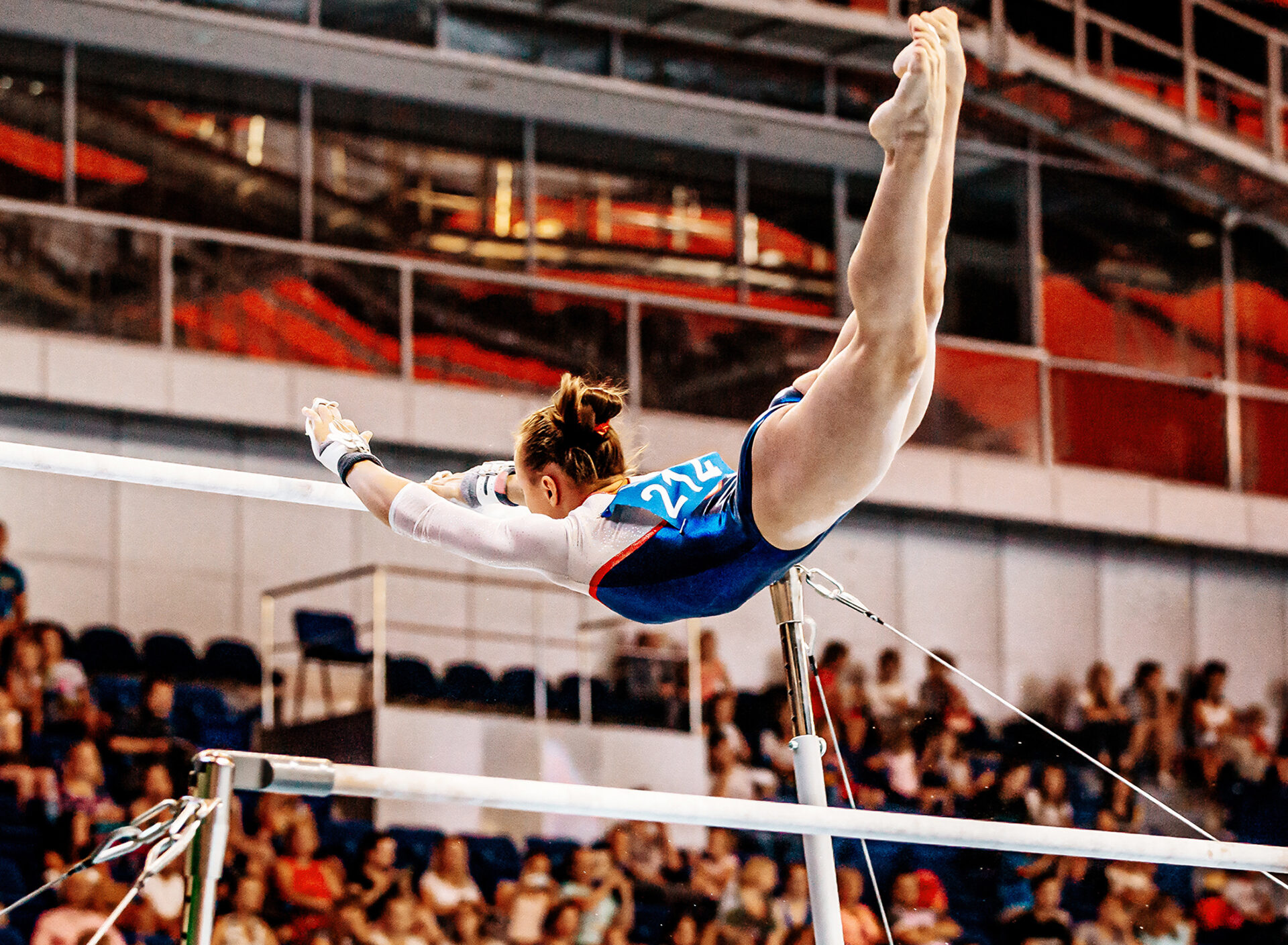Authored by Thomas Del Guercio, MD, one of our pain management and spine care specialists. Dr. Thomas Del Guercio is a Dual Board-Certified Interventional Pain physician in Pain Medicine and Physical Medicine & Rehabilitation . He takes pride in providing care using the latest procedures and techniques in the rapidly evolving field of pain medicine. He provides compassionate care for patients suffering from a wide variety of conditions of the spine, nerves, joints and muscles. One such spine condition is isthmic spondylolisthesis.

What is Isthmic Spondylolisthesis?
Isthmic spondylolisthesis is a specific type of spondylolisthesis, a condition characterized by the displacement or slippage of one vertebra in relation to the vertebrae below it. Unlike other forms of spondylolisthesis, which can be caused by trauma or degenerative processes, isthmic spondylolisthesis is primarily the result of a defect in the pars interarticularis, a small section of bone that connects the upper and lower facets of each vertebra. This condition is a significant focus within orthopedic sports medicine because it is especially prevalent among athletes.
Causes and Risk Factors of Isthmic Spondylolisthesis
Understanding the causes and risk factors associated with isthmic spondylolisthesis is crucial for both athletes and non-athletes.
Repetitive trauma to the lower back is a common cause of this defect, making sports that involve frequent hyperextension of the spine particularly risky. Gymnasts, football players, and weightlifters are among the athletes most susceptible to developing isthmic spondylolisthesis.
Genetics also play a role in the development of this condition, as some individuals may be predisposed to having a weaker pars interarticularis. Additionally, stress fractures in the lower back can contribute to the formation of this defect over time.
Understanding these causes and risk factors can help individuals take preventive measures and make informed decisions regarding their physical activities.

Prevalence and Impact of Isthmic Spondylolisthesis
The pars interarticularis’s vulnerability to stress fractures, especially under repetitive motion, is a well-documented concern. Research indicates that isthmic spondylolisthesis affects approximately 5-7% of the population, with a higher incidence among individuals engaged in activities that place substantial stress on the lower back, and approximately 6% of adolescents participating in sports that hyperextend the back are at risk of developing spondylolisthesis. The need for preventive measures and early intervention strategies carried out by medical professionals dedicated to diagnosing, managing, and rehabilitating spine-related athletic injuries couldn’t be more pertinent.
Symptoms of Isthmic Spondylolisthesis
While isthmic spondylolisthesis may be asymptomatic in about 75% of cases, the remaining 25% can experience debilitating symptoms that vary from person to person depending on the severity of the condition. Common symptoms include lower back pain that may radiate to the buttocks or legs (sciatica), stiffness and limited range of motion in the spine, and muscle weakness or tightness in the legs.
Diagnosing Isthmic Spondylolisthesis
The large discrepancy in symptom manifestation demands personalized care strategies to properly diagnose and treat isthmic spondylolisthesis. A thorough medical evaluation is necessary: your pain management doctor will review your medical history, conduct a physical examination, and may order additional diagnostic tests such as X-rays, CT scans, or MRI scans. These tests will help confirm the presence of spondylolisthesis, determine the extent of the slippage, and identify any associated spinal abnormalities.

Pain Management and Spine Care Treatment for Isthmic Spondylolisthesis
Pain management specialists leverage their expertise to guide athletes from diagnosis through recovery, ensuring a return to peak performance. The treatment landscape for isthmic spondylolisthesis ranges from physiotherapy and pain management to surgical solutions for severe cases, requiring a tailored approach to each athlete’s unique situation.
Non-surgical treatments are typically the first line of defense and may include physical therapy, medication for pain relief, and lifestyle modifications.
- Physical therapy focuses on strengthening the core muscles, improving flexibility, and reducing pain and inflammation. It may involve exercises, manual therapy, and other modalities.
- Medications such as nonsteroidal anti-inflammatory drugs (NSAIDs) or muscle relaxants can help manage pain and discomfort.
- For athletes prone to isthmic spondylolisthesis, modifying activities that contribute to their condition may be recommended.
In cases where non-surgical options do not provide sufficient relief, surgical intervention may be necessary. The goal of surgery is to stabilize the spine and relieve pressure on the nerves. Surgical techniques may include spinal fusion, decompression, or a combination of both.
Your pain management doctor will guide you through the available treatment options and help you make an informed decision based on your specific condition.
Visit the Pain Management Doctors and Spine Care Specialists at AOSMI
Through treating many cases of isthmic spondylolisthesis, Dr. John Georgy, Dr. Ali Valimahomed, and Dr. Thomas Del Guercio, and the spine care specialists at AOSMI have gained the experience to adapt to any mitigating factors and bring suffering athletes back to optimal performance. The spine demands integrity in each vertebra for seamless movement and strength, so don’t leave your orthopedic care in the hands of anyone but the industry leader in personalized isthmic spondylolisthesis treatment. Contact us or make an appointment online at one of our New Jersey clinic locations today to start your recovery journey and get back in the game.







